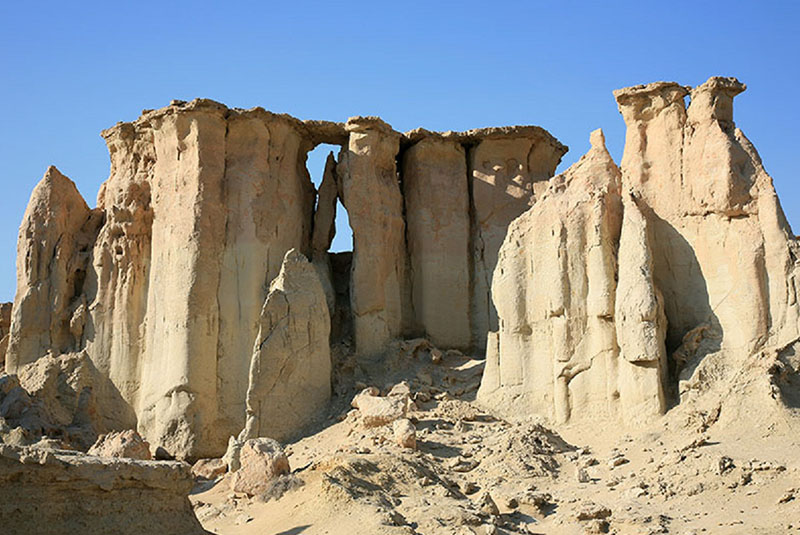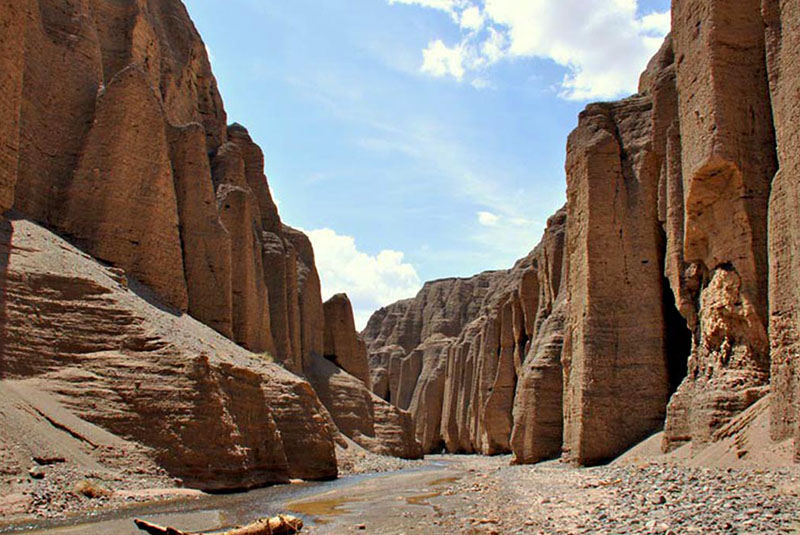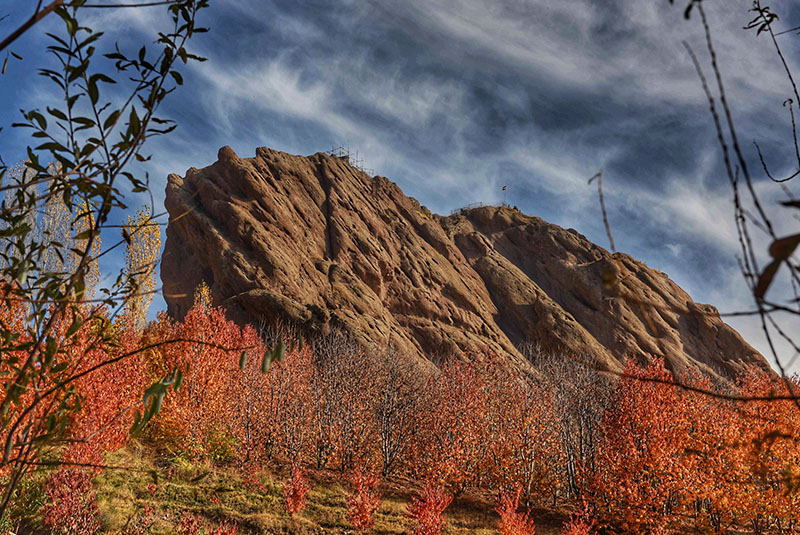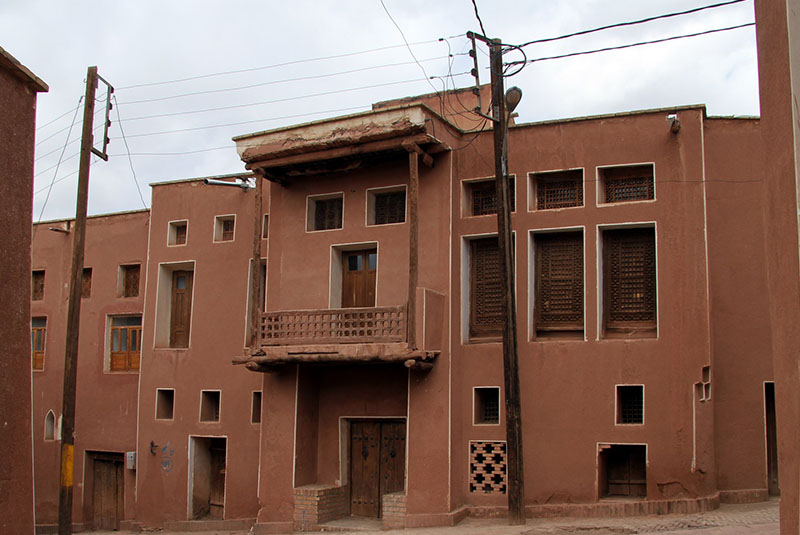The Most Spectacular Valleys in Iran that You Shouldn't Miss
When people start planning their travel to Iran, they mostly think of big cities such as Isfahan, Yazd, and Shiraz. Moreover, they usually think of ancient sights to visit, not to mention Persepolis or Jame Mosque of Isfahan.
However, Iran is not limited to these cities or sights, and there are always much more to see and enjoy. Take a trip with us to discover the most spectacular valleys in Iran that you should not miss.
1) Stars Valley, Qeshm Island
Stars Valley or Valley of Stars is located in Qeshm Island and it is definitely on your “MUST SEE” list in Qeshm Island. Created as the result of the erosion of soil and stones by wind and rain, the two-million-year-old Stars Valley is located on the west of the village of Berkeh Khalaf, 5 kilometers from the southern coast of the Qeshm Island.

Locals believe that a star once fell on this area thereby creating the rocky shapes that make it seem as if from another planet. In fact, it is the result of years of erosion by heavy precipitation. The valley is composed of marl and sandstone, and the rock formations vary from tall pillars, creating canyon-like paths, to hollowed-out spaces and smooth, round stones.
If you are planning to travel to Iran, you can visit this beautiful village through our Persian Gulf Gateway tour.
2) Rainbow Valley, Hormoz Island
The entire of Hormoz Island is made of Rainbow Mountains and you can freely walk through most of the middle of it. But this spot is a good place to stop and check out all the colors. In close vicinity of Silence Valley, lies the mesmerizing valley of more than 70 shades of minerals, rendering the valley a perfect subject of Geology studies.
Rainbow Valley is a geologist’s dream and an inspiration for artists and nature enthusiasts. Imagine a narrow valley with multi-hued earth and sand and colorful mountains in shades of red, purple, yellow, ochre and blue – the result of the uneven cooling of molten rock. On all sides, patches of color form geometric patterns. This awesomely photogenic natural site is at its best in the late afternoon.
| Related: Why Explore Iran's Ecotourism Wonders
3) Rageh Canyon, Kerman
Geopark of Rageh Canyon which is a natural attraction of Kerman is formed due to the phenomenon of erosion in the plain of Rafsanjan. The length of the valley is about 20 kilometers and the depth of the valley is 70 meters.

The opening of the valley is about 180 meters and in some places, it is less than three meters. The contrast between the flat plain and the canyon, the forms, and volumes created by the erosion of the valley have been monopolized. In some places among columns and wall peak jags there are interesting and various spatial shapes, moreover it can be seen narrow and wide passages alongside the river and valley walls, in addition to small or big holes and cuts which some of them are natural and some are manmade long ago. Eagle, partridge bird and gazelle are some of the wildlife in the area, however, Rage is near the Bidoye protected area.
4) Taleghan Valley, Taleghan
There are plenty of valleys to explore in Taleghan, which is comprised of 76 smaller villages. The first valley appears at the top of the mountain pass to enter this county, and calm, clear water reflects the villas that dot the hillside. Other tree-lined villages sit in the valleys, surrounded by slopes lined with walnut trees fed by roaring rivers down the center. Wild horses and bell sounds of the grazing sheep make frequent appearances, creating the perfect escape from busy city life.
| Discover: Iran’s Top 10 Seas and Lakes
5) Alamut Valley, Qazvin
Located between the dry plains of Qazvin and the forested hills of Mazandaran Province, the Alamut Valley rewards those who spend some time hiking through it. Alamut, the valley of assassins, the fort of eagles is a natural and historical oddity in Iran. The ominous reputation of the region as the center of power for one of the most feared military forces in history is only augmented by the unimaginable expanse of its valley and formidable mountains that strike one as the massive bodies of giants in hibernation.

If you are interested in hiking, Alamut Valley is one of the best places for hiking and mountain climbing. You can visit Ovan Lake and capture picturesque photos, walk through the ancient and see the Castel of Hasan Sabbah, and stay at a local house in one of the beautiful villages of Alamut Valley.
6) Lar Valley, Tehran
Lar Valley sits at the foothills of Mount Damavand. Given its diverse ecosystems, it is home to various birds, reptiles, mammals, and amphibians. As it’s only open for a few months during the year, its best visited from May to June when the landscape is covered with bright yellow wildflowers and wild red poppies, adding a lovely contrast with the azure waters of Lar Dam.
Lar Valley is one of the best places for hiking, mountain climbing, and even cycling. So if you have the interest to do one of these activities during your travel to Iran, let us know, so we prepare it for you.
| Discover: Iran's Wildlife - A Nature Lover's Guide + Pics
7) Kool Khersan (Khersoon), Dezful
The reason for naming is not determined exactly. Kool means a closed valley and Khersan is the plural form of Khers meaning Bear. People believed that bears were living there before.
The Kool Khersan (khersoon) valley or Dezful's Ghost Valley is a natural tourist attraction in Khuzestan Province. It is more than 200 meters deep and its walls are covered with Siavoshan herbs and waterfalls and beautifully watered canyons. The entrance to Kool Khersan is covered with trees (Cedar) and palm trees, and the massive gravestones and grapevine trees and wildlife figs have made this place looks like strange valleys of movies.
8) Shirez Valley, Lorestan
Lorestan Province is known for its natural beauty, and Shirez Valley is one of the most amazing places to visit and explore. It is located 45 kilometers northeast of Kuhdasht city in Lorestan Province. This great canyon is surrounded by 150 to 200 meters high walls! The erosion of stones and rocks in this area has made amazing shapes here.
| Also read about: Top 20 Most Beautiful Waterfalls in Iran

Shirez canyon is of great geo touristic importance, so although it is not located in the touristic route of Iran (consisting of the main cities) it attracts so many visitors every year. This is actually located at the intersection of 3 provinces: Lorestan, Kermanshah, Ilam. You’ll be surprised to know that there are some ancient sites here belonging to the Stone Age! There are also some works belonging to cave life era. When you walk here, you can see oak and sycamore trees across the valley. Mother Nature also has grapes, figs, and wild pears here for you. The best time to visit Shirez canyon is during spring and summer because the mountains in this area make a temperate climate during spring and summer. But during winter and fall, it gets cold here.
| Read more: Top 10 Forests and Jungles of Iran
9) Dohezar Valley, Tonekabon
The sensational Dohezar Valley sits outside Tonekabon, a city in the Mazandaran Province along the Caspian Sea and still commonly referred to by its former name, Shahsavar. Peace of mind and a cool climate await visitors who vacation here in the summer, escaping the chaos and heat of other parts of the country. Thick forests, open grazing fields, and flowing streams make up the heavenly atmosphere, and it’s also a fabulous place to catch the Mazandarani dialect and culture of the local villagers.
10) Abyaneh Valley, Isfahan

As a village of great antiquity, Abyaneh is like a living architectural and anthropological museum. It presents an impressive model of the man adapting to the environment. It is located on the northwestern slope of Mount Karkas, 40 kilometers from Natanz, in Isfahan province. It is 2,500 meters above sea-level. A road links Abyaneh to the main Kashan-Natanz highway in a region called Hanjan, which is 55 kilometers and 25 kilometers away from Kashan and Abyaneh respectively. Abyaneh is mainly watered by Barzrud River. Set on the slope of the lofty mountain of Karkas, this village has a cold climate with numerous springs creating a favorable condition for agriculture. Given the evidence found in Abyaneh, the village dates back to antiquity, but its golden age was during the Safavid era. The word ‘Abyaneh’ has been derived from the word ‘viona’ meaning ‘Willow Grove’ (in the local dialect ‘vey’ means willow).


Comment
Leave a Comment